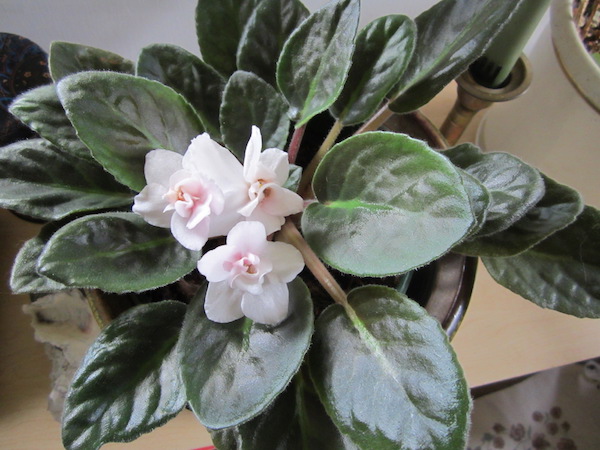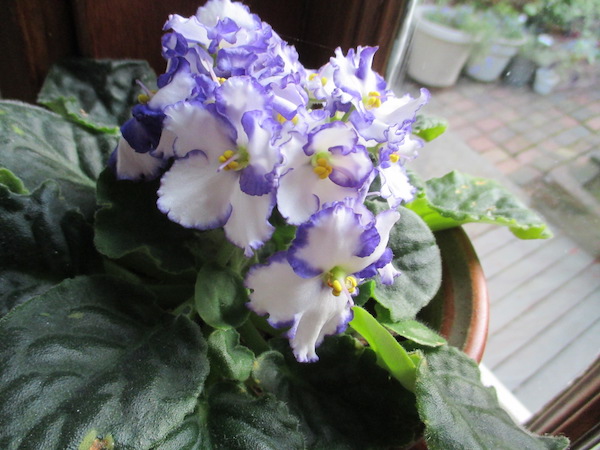Plant of the Month: January 2020
|
| African Violet |
| Saintpaulia ionantha H. Wendl. |
| = Saintpaulia kewensis (L.) C.B. Cl., non hort. |
| = Streptocarpus ionanthus (H. Wendl.) Christenh. 2012 |
GESNERIACEÆ; Gesneriad Family
|
| African Violets are certainly the most popular flowering houseplants, and at one point at least in the USA were the most popular houseplants --period. Why? They are small, free-flowering, easy to grow, easy to propagate, and come in delightful variation. After years, they can become large: one was 37 inches wide with 350 open flowers! The common African Violets, though not all, taste bitter but are non-toxic. The flowers have been brushed with egg white and dusted with sugar or chocolate; the petals added to salads (African Violet Crafts by Alice Wilder in African Violet Magazine 49(6): 50-51 (Nov.-Dec. 1996). |
| The typical African Violet is native to coastal Tanzania, on limestock rocks. Another name is Usambara Violet. It is the very well known tufted herb of rosette habit of which 2,000+ cvs. exist. The leaves are thick, fuzzy, egg-shaped or nearly round, most <3 inches long. Flowers are long-lasting, in many colors, with centers of yellow-orange stamens --or not, when all-petalled. |
Depending on the source consulted, there are 6 to 11 Saintpaulia species. Or none. Yes, in 2012, it was proposed, reasonably, that the genus become part of Streptocarpus..
|
| Saintpaulia ionantha ssp. rupicola (Burtt) I. Darbysh. |
| = Saintpaulia rupicola Burtt |
= Streptocarpus ionanthus ssp. rupicola (Burtt) Christenh. 2012
|
From Jurassic limestone regions of SE Kenya, in crevices of bare rock. In my experience, its leaves are edible raw, far more agreeable than those of typical S. ionantha. They are smaller, long-stemmed, less hairy, and less bitter.
Back |

African Violet ; photo by ALJ
|

African Violet ; photo by ALJ
|

African Violet ; photo by ALJ
|

Saintpaulia ionantha ssp. rupicola ; photo by ALJ
|
|
|

